WiFi antenna booster dish
 When I'm in my big garage workshop
out in the country, I use the WiFi from the people in the house nearby
(with permission). But it's a bit of a distance from the house, with some
wooden buildings and a hedge in between.
When I'm in my big garage workshop
out in the country, I use the WiFi from the people in the house nearby
(with permission). But it's a bit of a distance from the house, with some
wooden buildings and a hedge in between.
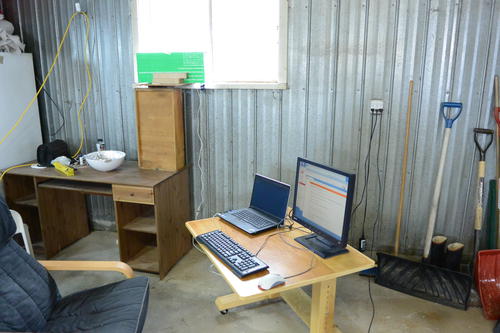 With the metal clad walls of the garage, there's no signal inside, and even on the
window sill, the laptop doesn't get a usable signal. So I bought an external
WiFi adapter and put that on the window sill. This works, but just barely.
With the metal clad walls of the garage, there's no signal inside, and even on the
window sill, the laptop doesn't get a usable signal. So I bought an external
WiFi adapter and put that on the window sill. This works, but just barely.
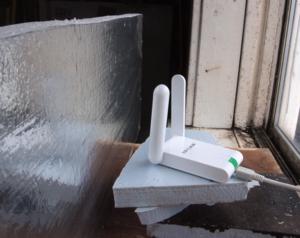 So I experimented with putting a reflector, which is just a tinfoil coated piece
of styrofoam, behind the antenna. If placed at just the right distance, this can
boost the performance considerably.
So I experimented with putting a reflector, which is just a tinfoil coated piece
of styrofoam, behind the antenna. If placed at just the right distance, this can
boost the performance considerably.
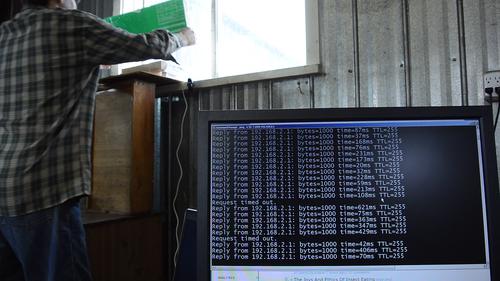 I'm testing the performance by sending 1000 byte ping packets to the WiFi router.
When I remove the reflector, ping times go up considerably and some packets
end up dropped.
I'm testing the performance by sending 1000 byte ping packets to the WiFi router.
When I remove the reflector, ping times go up considerably and some packets
end up dropped.
I'm using ping times to measure performance. The stronger the signal, the higher bit-rate encoding the WiFi is able to use, resulting in shorter round trip times.
I didn't need any extra software to do this. I just opened a command prompt and typed:
ping -l 1000 -n 100 192.168.2.1
Where "192.168.2.1" is the IP address of the router, which you can get by running "ipconfig" from the command shell (it will be on the line "Default Gateway")
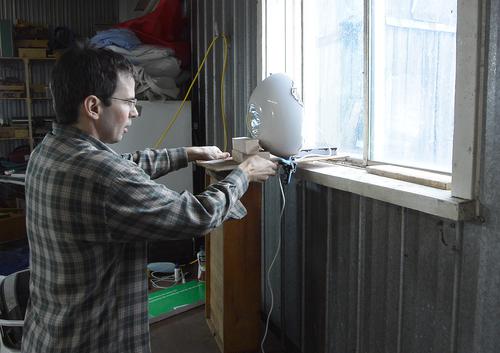
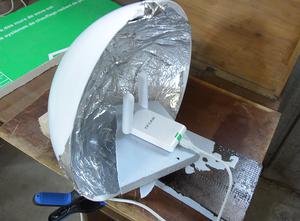 Having had success with a flat reflector, I figured I'd up the game and try a
dish shaped reflector. This worked even better. But the experiment made for a rather
precarious arrangement, easily knocked out of place.
Having had success with a flat reflector, I figured I'd up the game and try a
dish shaped reflector. This worked even better. But the experiment made for a rather
precarious arrangement, easily knocked out of place.
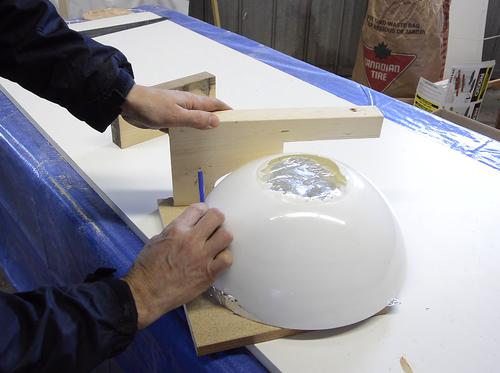
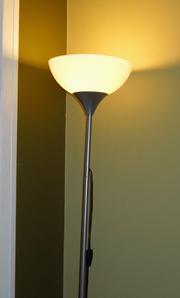 The reflector is just a plastic lamp shade from a broken upright lamp, similar
to one I used for one of my light stands,
but this one was too broken to use even for that. I glued some tinfoil
to the inside using UHU stick.
The reflector is just a plastic lamp shade from a broken upright lamp, similar
to one I used for one of my light stands,
but this one was too broken to use even for that. I glued some tinfoil
to the inside using UHU stick.
I made a more sturdy mount for the dish and WiFi adapter. I used some old particle board and scraps of 2x4 lumber to put something together.
Left: I'm tracing the curvature of the dish.
Below, left: Nailing it together with a brad nailer, because looks don't really matter for this one.
Below, right: Screwing through the dish to attach it.
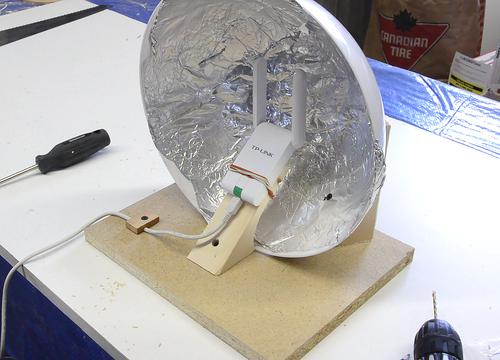 The USB WiFi adapter straps on with some rubber bands. This way,
I can still slide it around a bit to tweak the position.
The USB WiFi adapter straps on with some rubber bands. This way,
I can still slide it around a bit to tweak the position.
The adapter's antennas need to be quite far into the dish. To the extent that the dish is parabola-like, the focal point is actually quite deep inside the dish.

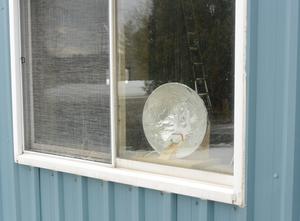 And with this setup, I was able to get ping times often around 12 milliseconds,
but sometimes even less. So I have a much improved connection now.
And with this setup, I was able to get ping times often around 12 milliseconds,
but sometimes even less. So I have a much improved connection now.
This would of course be a great set-up for stealing a neighbour's WiFi, but the dish is not exactly subtle!
See also:
Back to my Woodworking website.
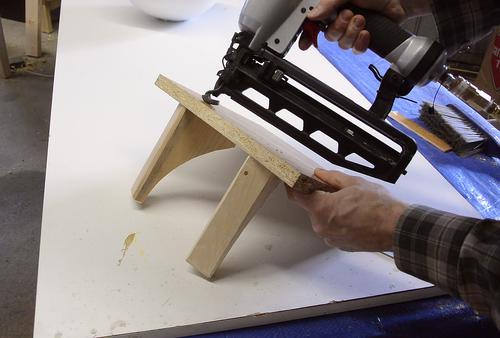
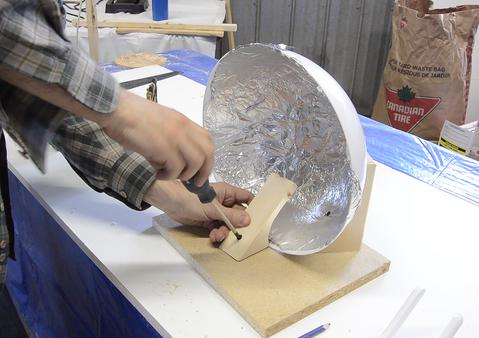
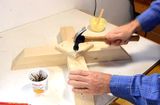 Light stands from
Light stands from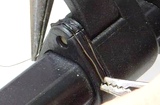 Repairing plastic parts
Repairing plastic parts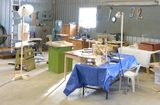 Big garage workshop
Big garage workshop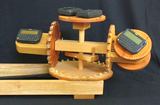 Pager rotating machine
Pager rotating machine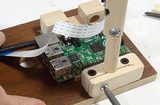 Raspberry Pi computer holder
Raspberry Pi computer holder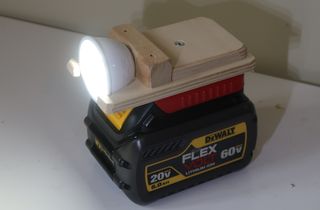 Drill battery powered LED worklight
Drill battery powered LED worklight